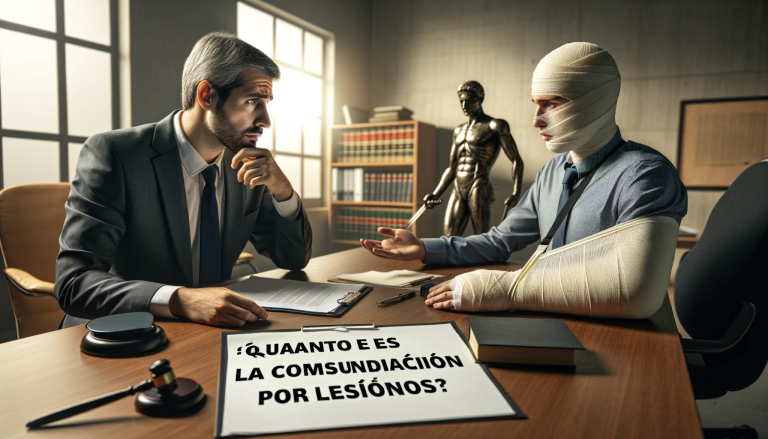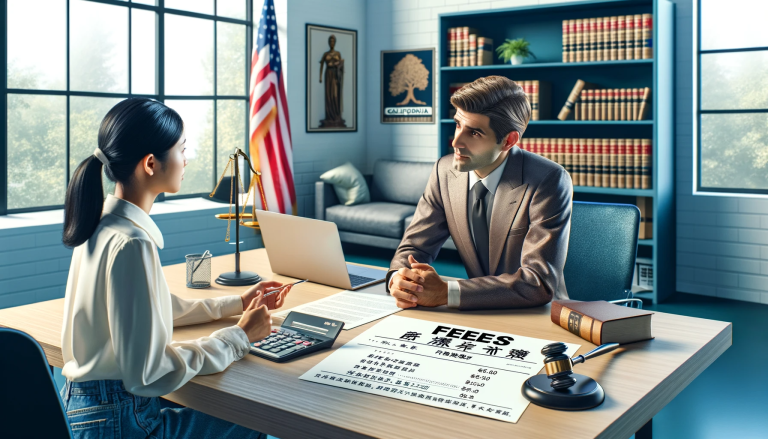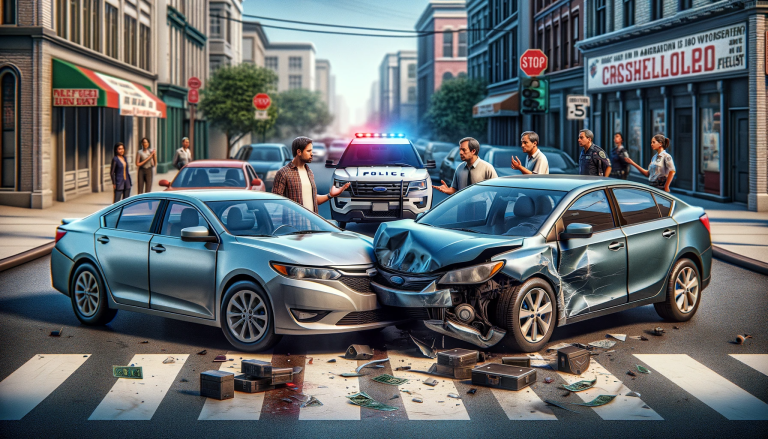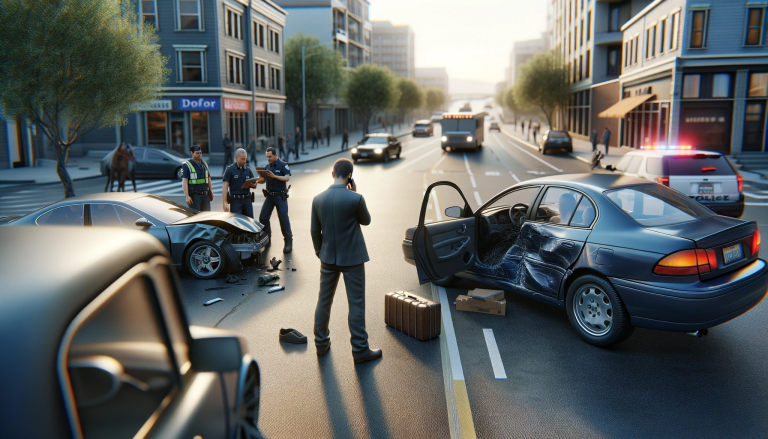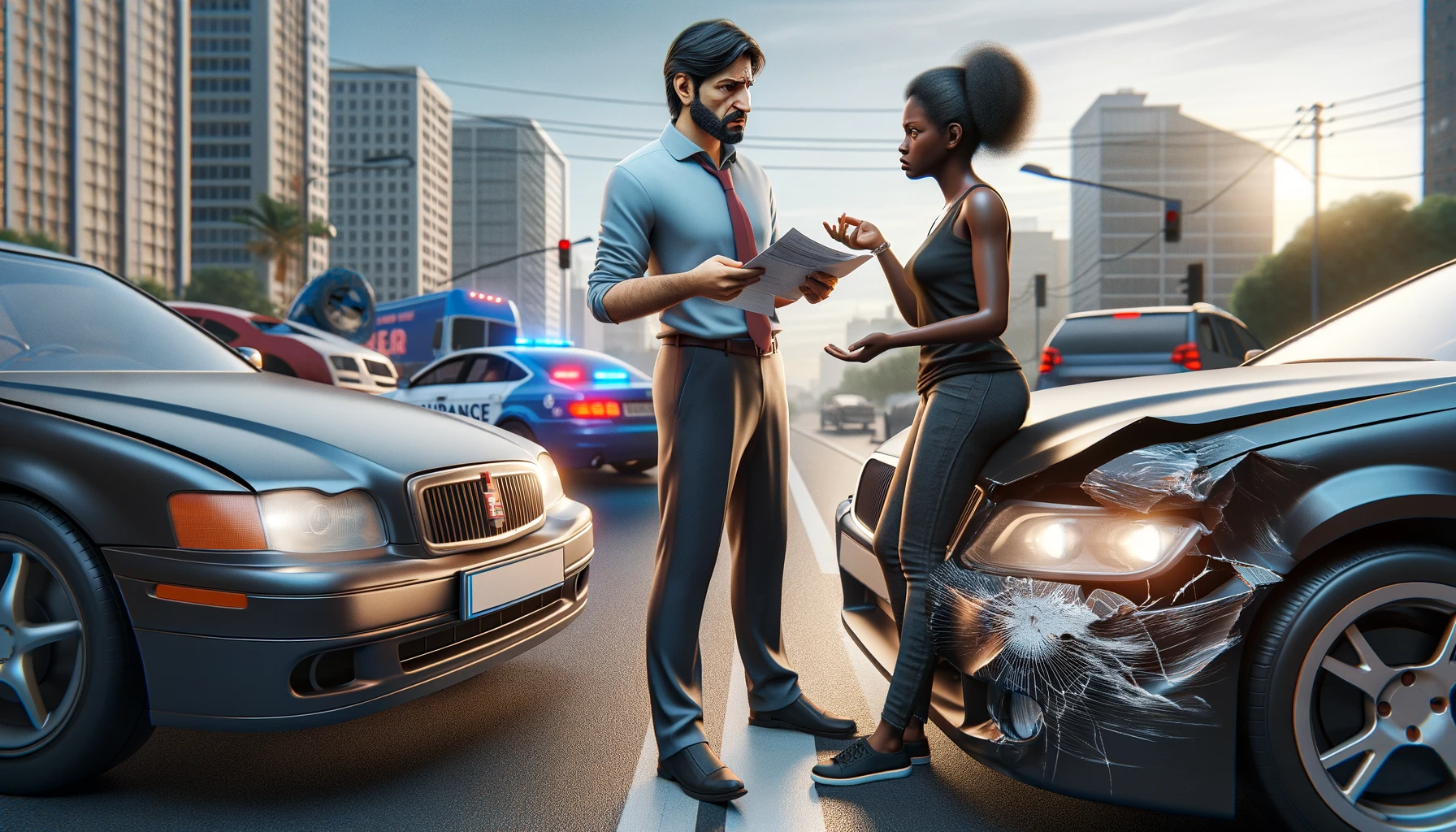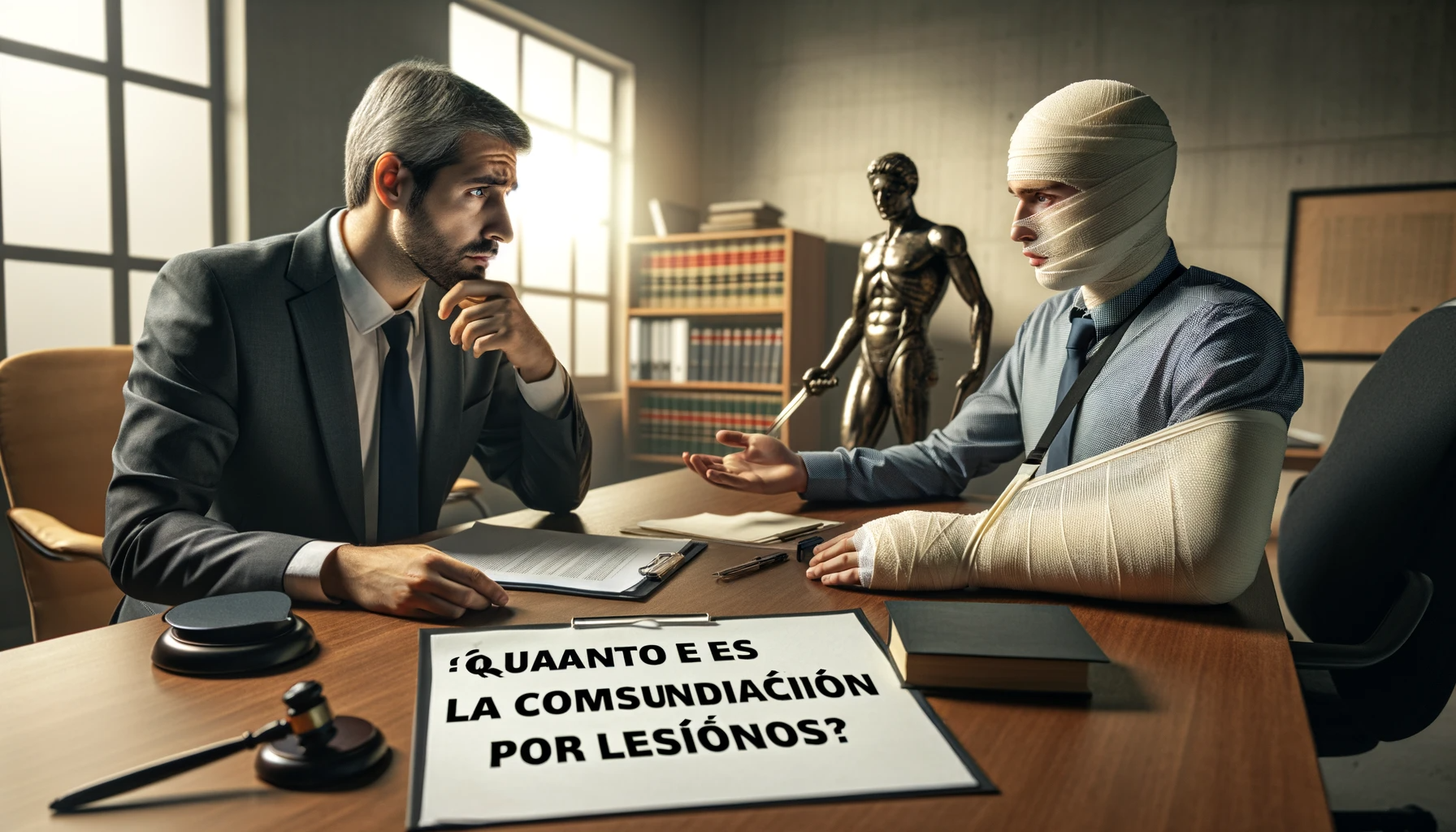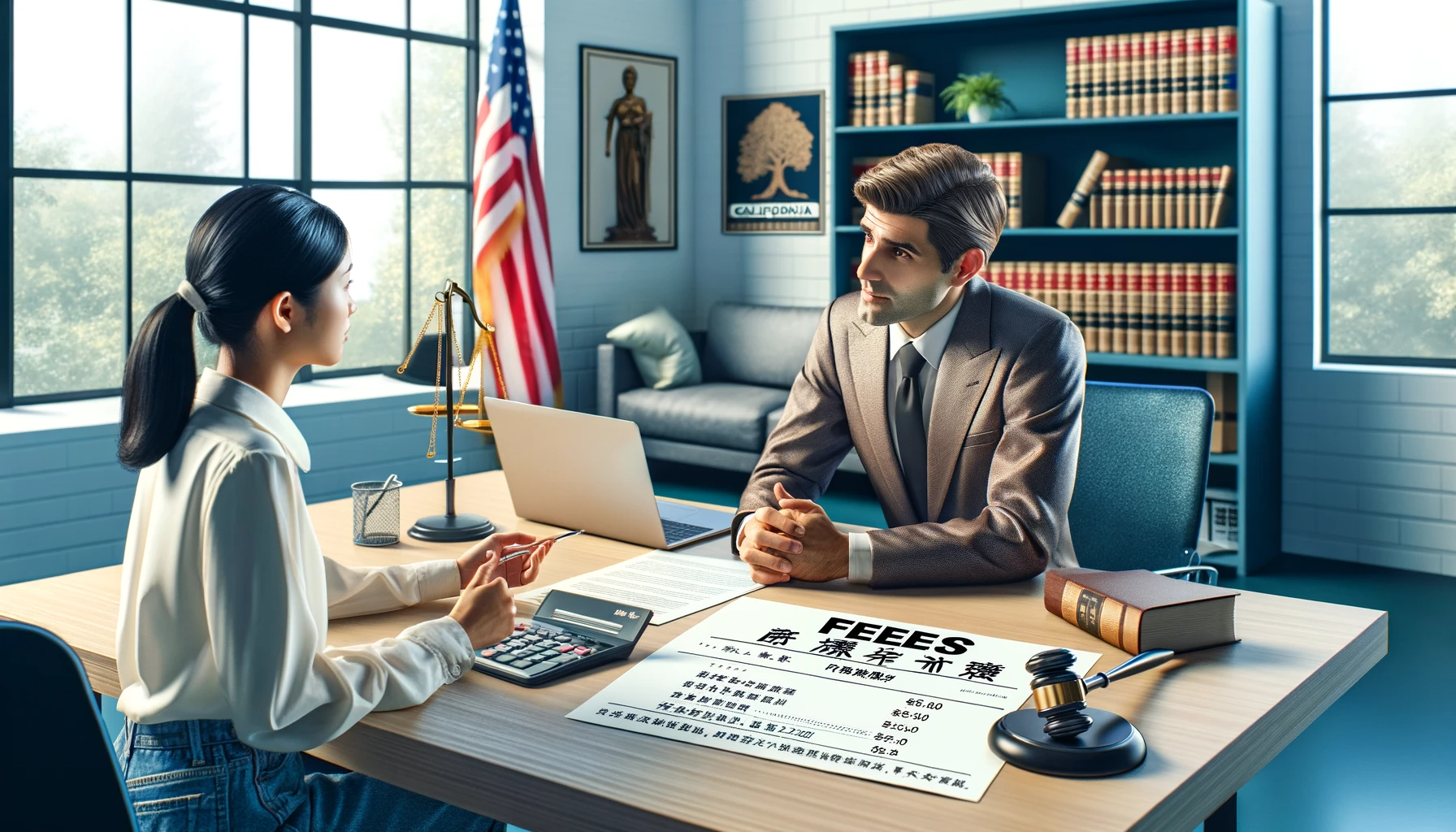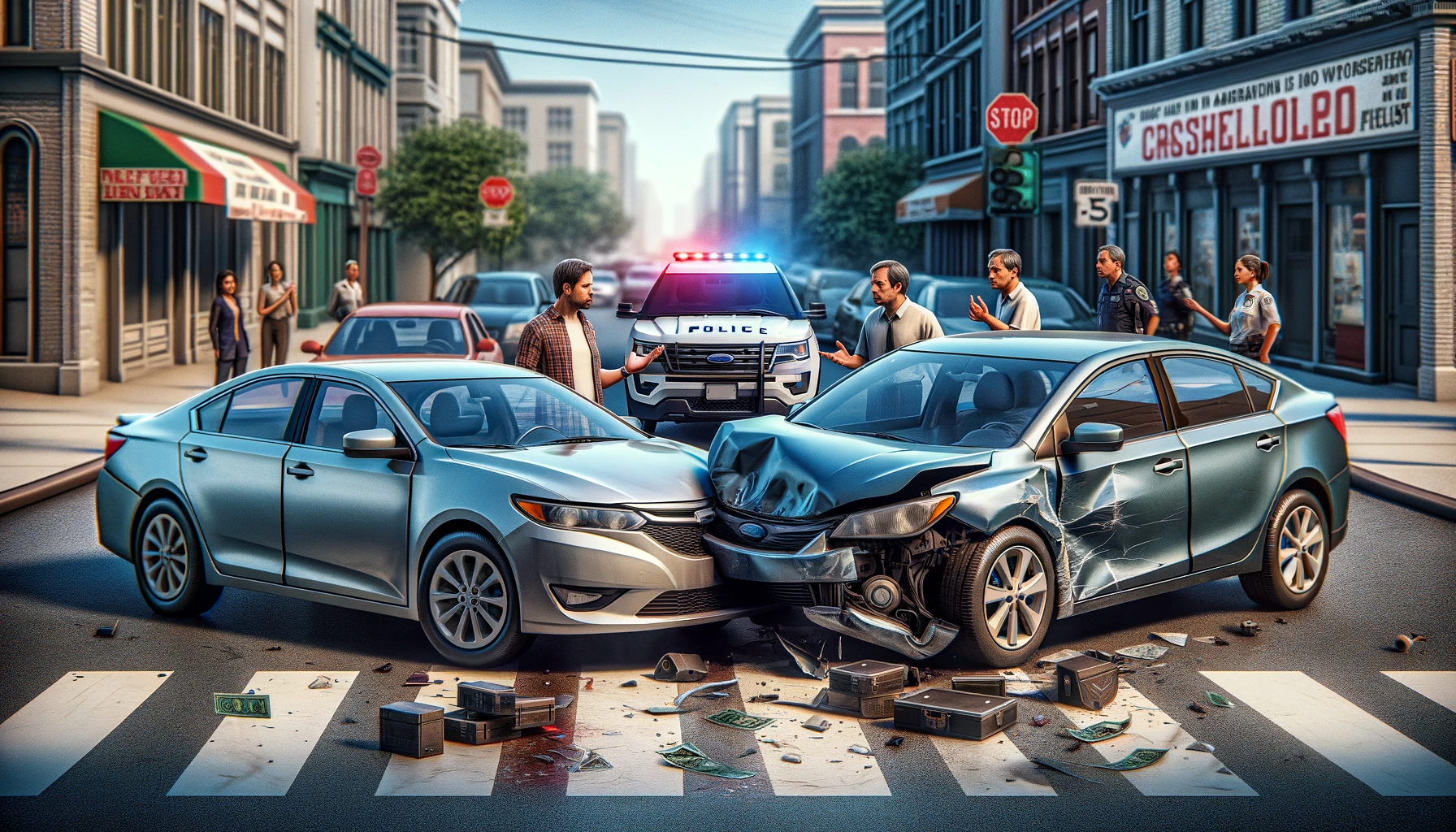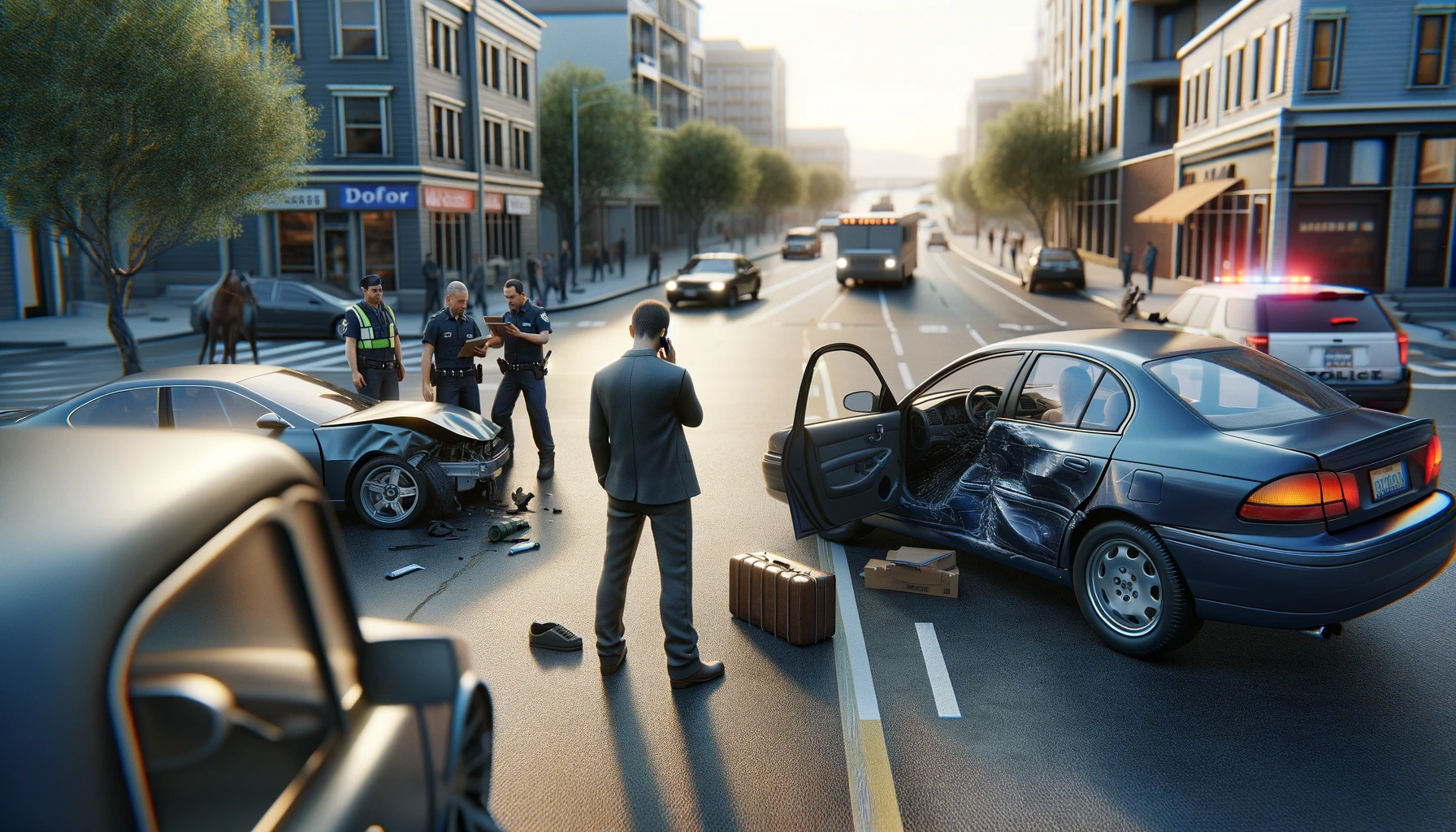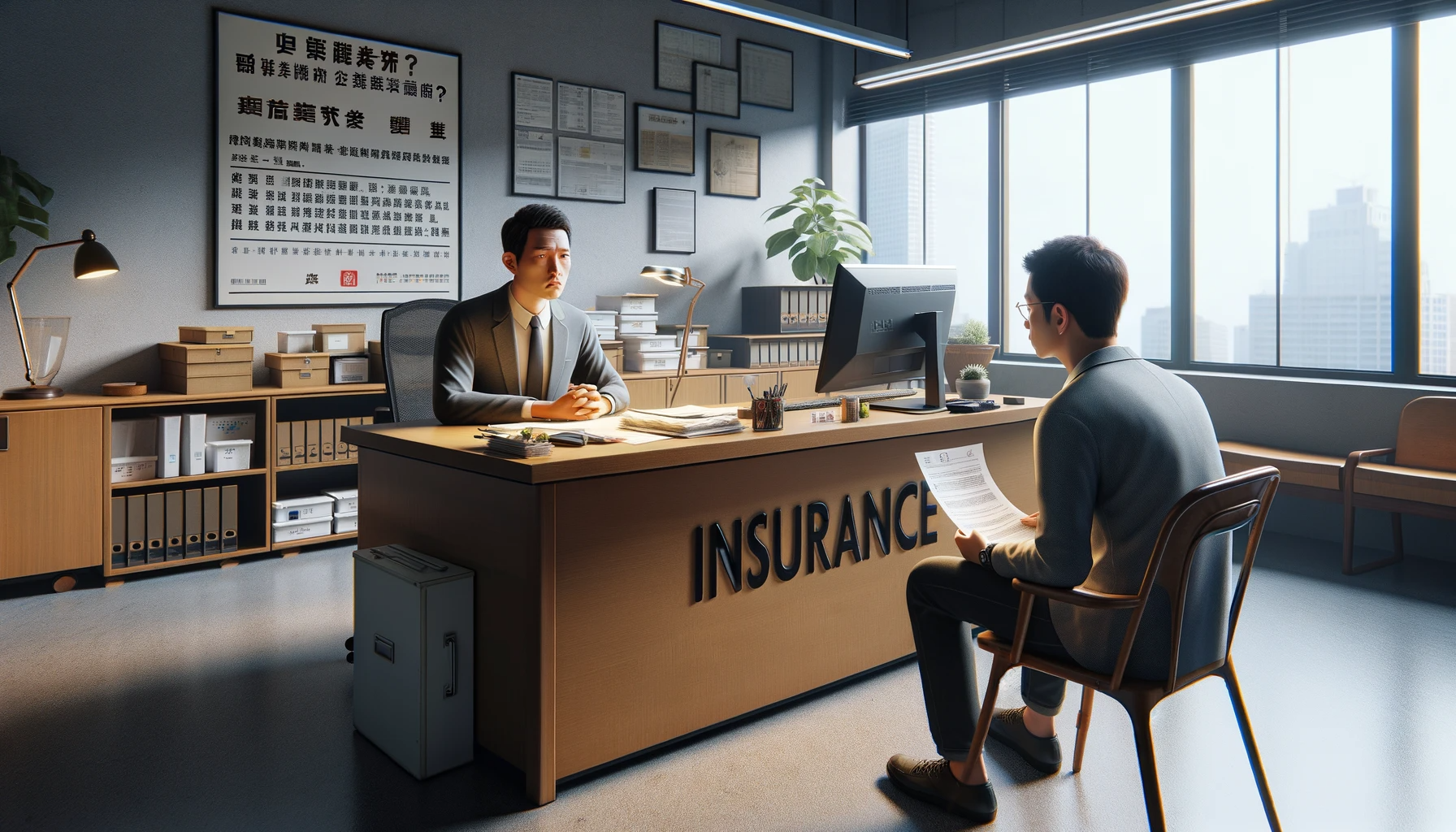Understanding Liability in Accidents
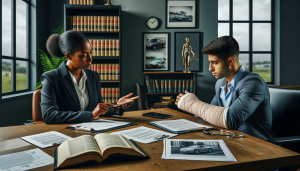
Defining Liability in Accidents
Liability refers to the legal responsibility for one's actions or inactions. In the context of accidents, it means that a party (person, company, etc.) is legally responsible for the resulting damages or injuries. This includes financial costs for medical expenses, repairs, and often emotional distress or pain and suffering.
Factors Determining Liability
How is liability determined in an accident? The main factor is negligence. If a party didn’t exercise a reasonable level of care and directly caused an accident, they are usually found negligent and therefore liable. For instance, if a driver is texting while driving and hits a pedestrian, the driver could be considered negligent. However, determining negligence isn’t always straightforward. Sometimes multiple parties share liability, with each party bearing a percentage of the total costs of the accident.
The Role of Insurance
In many cases, insurance plays a major role in covering the damages from an accident. The person found at fault in an accident typically has their insurance company pay for the other party's damages, up to the policy limit. However, it's important to note that having insurance doesn’t absolve an individual from liability. If the costs exceed the insurance coverage, the party at fault may need to pay the remaining amount out-of-pocket.
Contributory and Comparative Negligence
Many jurisdictions implement rules of contributory or comparative negligence. Under contributory negligence, if you are even slightly at fault for an accident, you may not be able to recover damages. On the other hand, comparative negligence allows for the division of damages proportionate to each party’s degree of fault. This means if you’re partially responsible for an accident, you may still receive some compensation, less the percentage of your contribution to the accident.
Strict Liability in Special Cases
In some cases, the concept of strict liability applies. This mostly relates to cases involving inherently dangerous activities or defective products. Under strict liability, a party can be held liable for damages without the need to prove negligence or fault. For example, in a car accident caused by a faulty brake system, the manufacturer could be held strictly liable.
Role of Insurance Companies in Accident Damage Compensation
Evaluating Liability
Insurance companies play a significant role in determining liability in an accident. The claims adjuster investigates the accident details, which include accident scene photos, police reports, and witness testimonials. Based on this investigation, they decide who is at fault. It is worth noting that the fault percentage can be divided among the parties involved; for instance, one party could be 70% at fault while the other is 30% at fault.
Damage Assessment and Compensation
After establishing liability, insurance companies are responsible for assessing the damage caused by the accident. This typically involves a thorough review of the affected vehicle(s) or property, with an aim to estimate the repair costs. Depending on the terms of the policy, the insurer may either choose to pay for the repairs or provide a payout equivalent to the pre-accident value of the damaged item - minus any policy excess and depreciation.
Claim Settlement
Another important role of insurance companies is to negotiate and settle claims. The negotiations usually happen between the insurers of both parties, where they discuss and agree on the compensation amount. Once an agreement is reached, the at-fault party’s insurer will make the payment. Claim settlement also includes providing financial compensation for medical expenses, lost wages, and other related costs incurred by the victim.
Policy Renewal Consequences
Lastly, insurance companies have a role in adjusting their policyholders' premiums post-accident. This consequence is usually faced by the at-fault party. Accidents often lead to increased insurance premiums, given the heightened risk perception of the policyholder by the insurer. However, the effect of an accident on insurance premiums varies widely based on the insurer and the driver’s past record.
In conclusion, while insurance companies do not directly pay for accident damage (it's the policyholder's premiums that furnish these payments), they are instrumental in the process of compensation, playing multiple roles from evaluation to claim settlement and premium adjustment.
Legal Obligations and Rights in Accident Damage Payment
Understanding Legal Responsibility in Accidents
In an accident, the legal responsibility or liability often lies with the party who is at fault. This typically means that the person or entity whose action or negligence caused the accident is legally obliged to compensate for the damages. However, determining fault isn't always clear-cut and can involve several examinations into the circumstances surrounding the incident.
Liability Insurance and Its Role
Most drivers are required by law to have liability insurance. This type of insurance covers the damages inflicted on another person's property or injuries sustained by other people as a result of an accident the insured party is found to be at fault. It is important to note that liability insurance does not cover the damages to the policyholder's own vehicle or self-inflicted injuries.
Contributory and Comparative Fault
Some jurisdictions operate under what's known as "contributory" or "comparative" fault rules. Under these rules, if the injured party is partially responsible for the accident, their recovery amount from the other party's insurance could be reduced proportionally. For instance, if the injured party is found to be 20% at fault, they may only receive 80% of the total damage value.
The Tort System and No-Fault Insurance
The tort system, followed by many states, allows the not-at-fault party to claim damages from the at-fault party’s insurer. On the other hand, some states work under a no-fault system. A no-fault system requires the insurance companies to pay for their own policyholder's damages irrespective of who caused the accident. This system limits the ability to sue unless certain thresholds (like serious injury) are met.
Right to Legal Representation
Finally, both parties involved in an accident have the right to seek legal counsel. If disagreements about the apportionment of fault or understanding of insurance coverage arise, a legal professional can provide expert guidance. Taking legal advice can be especially beneficial when injuries are severe, claims are rejected, or multiple parties are involved.
Determining Fault and Responsibility in Different Types of Accidents
Identifying the Guilty Party in Auto Accidents
Determining fault in auto accidents usually boils down to who was negligent. Negligence could mean not driving carefully, breaking traffic laws, or not paying attention to the road. Authorities and insurance companies will analyze police reports, photos of the scene, witness testimonies, and other evidence to establish who was responsible. In some cases, responsibility might be shared amongst several parties.
Ascertaining Liability in Slip and Fall Incidents
In slip and fall accidents, the property owner may be held responsible if they failed to maintain safe conditions, leading to the incident. Proving negligence in these accidents involves showing the owner knew about the hazardous condition but did not correct it. Alternatively, it may be that a reasonable person would have identified and resolved the issue, but the owner did not.
Determining Fault in Product Liability Cases
A product liability case arises when a consumer is injured by a defective product. The fault may lie with any party within the product's supply chain - the designer, manufacturer, distributor, or retailer. Proving fault in these cases often revolves around showing that the product was defective or unsafe, the defect caused the injury, and the product was being used as intended.
Assigning Blame in Medical Malpractice Cases
Medical malpractice occurs when a healthcare professional fails to provide a standard of care expected in their profession, resulting in patient harm. Proving fault in medical malpractice requires evidence that the practitioner acted negligently and this negligence specifically caused the damage. Experts are usually needed to testify about the accepted standards of practice and how the caregiver breached them.
Finding the Culprit in Workplace Accidents
In workplace accidents, the employer is generally at fault if they failed to uphold safety regulations or provide safe working conditions. However, a coworker or even the injured party themselves can also share responsibility if they acted recklessly. Workers' compensation often covers these incidents, regardless of who is at fault, but proving employer negligence can lead to additional damages in certain situations.
Compensation Channels: Personal Injury Protection (PIP) and Property Damage Liability
Understanding Personal Injury Protection (PIP)
Personal Injury Protection, often abbreviated as PIP, is a type of coverage that is included in auto insurance policies. This coverage is designed towards paying a percentage of the medical expenses and any lost wages for you (the policyholder), and possibly your passengers, irrespective of who was at fault in the accident.
In certain states, PIP coverage is compulsory, so one must check their respective state's requirements. It's also worth noting that covered costs by PIP vary depending on the specific policy and the limits set within it. Payments from this policy component are typically quicker since it doesn't require establishing fault first.
Navigating through Property Damage Liability
Property Damage Liability is also an integral part of most auto insurance policies. This coverage handles any damage inflicted to another person’s property during an automobile accident.
For instance, if a driver hits another vehicle, a fence, or a house, the property damages caused will be covered under the at-fault driver’s property damage liability insurance. This kind of coverage is mandatory in most states with the minimum required limit varies per state.
Distinction between PIP and Property Damage Liability
The main distinction between Personal Injury Protection and Property Damage Liability lies in the kinds of damages they cover. While PIP focuses on medical expenses and lost wages due to injuries from the accident, Property Damage Liability covers the costs of property damages resulting from the same accident.
It's important to note that PIP covers the policyholder and passengers regardless of who was responsible for the accident. On the other hand, Property Damage Liability covers the cost of damages that policyholders cause to others' property, taking into account who was at fault in the accident.
Opting for Suitable Coverage Limits
Choosing appropriate coverage limits for both PIP and Property Damage Liability is vital. These limits will determine the maximum payout from your insurance company for a particular claim.
Opting for higher coverage limits can provide broader financial protection but may also lead to increased premium costs. Thus, policyholders must weigh their potential risks and capacity to self-fund certain levels of loss before settling on coverage limits.
Role of PIP and Property Damage Liability in Accident Damages
To summarize, both Personal Injury Protection and Property Damage Liability play significant roles in addressing the financial implications of an accident. They offer somewhat distinct forms of protection and collectively help manage the diverse expenses that can arise from vehicular accidents. By understanding how these coverages function, motorists could make more informed decisions about their auto insurance policies.
Case Examples of Damage Reparation Following Accidents
Example 1: Road Traffic Accident
In this case, a motorist negligently swerved into oncoming traffic and collided with another vehicle. The responsible party's insurance company was obligated to cover the cost for all damages. This included mechanical repairs for the victim's car and medical expenses incurred due to injuries sustained from the accident. The compensation offered also covered the loss of income that the victim faced during their recovery period.
Example 2: Workplace Accident
In a manufacturing setting, an employee slipped on a wet floor, leading to a severe back injury. Since the accident happened at work, the employer was held liable under workers' compensation laws. The employer's insurance provider had to pay for the employee's medical treatment, rehabilitation services, and compensate for any temporary or permanent disability. Moreover, the employer was required to improve safety measures to prevent future accidents.
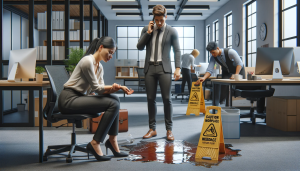
Example 3: Residential Property Incident
A homeowner neglected to repair a loose step on their front porch. A guest visiting the home tripped on the step and was injured. In this instance, the homeowner's liability insurance was responsible for covering the injured party's medical costs. Additional costs like physical therapy, ongoing care needs, and lost wages were also included in the compensation provided by the insurer.
Example 4: Product Liability Case
A consumer purchased a blender that had a manufacturing defect causing it to explode upon use, resulting in severe injuries to the user. The manufacturer was held accountable and obliged to cover all costs related to the accident. This included present and future medical expenses, loss of earnings, and other damages for mental anguish caused by the accident.
Example 5: Retail Store Slip and Fall
A customer in a grocery store slipped on a spill that staff failed to clean up promptly, suffering an injury as a result. The store's liability insurance took responsibility for the injury and covered the customer's medical expenses, lost income, pain, and suffering. This case also resulted in the store revising its maintenance protocol to prevent similar incidents in the future.
Steps to Take After an Accident to Secure Compensation
Step 1: Document The Incident
Immediately after the accident, it's crucial to document the incident as much as possible. This includes taking pictures or videos of the accident scene, the damage sustained by your vehicle, and any injuries you may have suffered. Make sure to also record the details of the accident itself - the date, time, location, weather conditions, and any other relevant circumstances.
Step 2: Report to Authorities
Once you're in a safe place, report the accident to the local police and your insurance company as soon as possible. Provide your full statement on the incident to both parties. The police will file an official report and this can serve as valuable evidence to support your claim.
Step 3: Seek Medical Attention
Whether you believe you've been injured or not, seek medical attention immediately after the accident. Some injuries may not present symptoms immediately, so it's important to have a medical professional assess your condition. Remember to get a copy of all records pertaining to your treatment as they will be useful when negotiating your compensation claim.
Step 4: Gather Relevant Evidence
Start gathering evidence that supports your claim. This could be witness statements, traffic cam footage, reports from accident reconstruction experts, or testimony from healthcare providers about the extent and nature of your injuries. The more thorough your documentation, the stronger your case is likely to be.
Step 5: Engage Legal Representation
Consider engaging legal representation, especially in cases involving severe injuries or significant property damage. An experienced attorney can guide you through the process, negotiate with insurance companies on your behalf, and help you obtain the maximum compensation possible for your damages and losses.
Conclusion
In conclusion, accidents can undoubtedly be both financially and emotionally overwhelming experiences. The repercussions of an accident can extend far beyond the immediate physical harm, affecting an individual's quality of life, financial stability, and emotional well-being. In such trying times, having a clear understanding of who bears the responsibility for covering the resulting damages is not just important but crucial.
The allocation of responsibility for damages hinges on a multifaceted interplay of various factors. Firstly, the issue of liability plays a pivotal role. Establishing who is at fault for the accident is the foundational step in determining who should shoulder the financial burden. This process involves careful examination of the circumstances surrounding the incident, which often requires a thorough investigation.
Moreover, the presence and adequacy of insurance coverage become a paramount consideration. Insurance policies, whether for automobiles, homes, or products, can significantly influence how the aftermath of an accident unfolds. These policies are designed to provide financial support and act as a safety net for those affected by accidents. Understanding the specifics of these insurance policies and how they apply to a given situation can be the difference between receiving due compensation and facing financial hardship.
In situations where insurance coverage proves inadequate or disputes arise over liability or the extent of damages, legal recourse may be necessary. Personal injury lawsuits and small claims court proceedings become viable options to resolve these matters and ensure that justice is served.
Look for an attorney who has the right legal resources for your legal needs.
Contact us here on the
Warmuth Law website or through our hotline 888-517-9888.
Frequently Asked Questions (FAQ's)
1. What if both parties in a car accident share fault?
In cases where both parties involved in a car accident share responsibility for the collision, a legal concept known as "comparative negligence" comes into play. Comparative negligence means that each party's insurance coverage may apply to cover their respective damages based on the percentage of fault assigned to them. For example, if you were found to be 30% at fault and the other driver 70%, your insurance would cover 70% of your damages, and the other driver's insurance would cover 30% of their damages.
2. Can I sue the manufacturer if I am injured by a defective product?
Yes, if you sustain injuries due to a defective product, you have the right to file a product liability lawsuit against the manufacturer or distributor responsible for the faulty item. These lawsuits are designed to hold manufacturers accountable for the safety of their products. If the defective product caused your injuries, you may be entitled to compensation for medical expenses, pain and suffering, and other damages.
3. Are there time limits for filing personal injury claims?
Yes, there are specific time limits, known as "statutes of limitations," for filing personal injury claims. These limits vary by state and the type of accident. It's crucial to consult with an attorney promptly after an accident to understand and adhere to the relevant statute of limitations. Failing to do so could result in the loss of your right to seek compensation.
4. What if the property owner claims they are not liable for my slip and fall accident?
If the property owner disputes their liability for your slip and fall accident, you may need to take certain steps to prove your case. This can include gathering evidence such as photographs of the accident scene, obtaining witness statements, and documenting your injuries. Consulting with a personal injury attorney is advisable, as they can assess the circumstances of your accident and help you navigate the legal process to establish the property owner's responsibility.
5. How can I ensure I receive fair compensation for my accident damages?
To ensure you receive fair compensation for the damages incurred in an accident, it's essential to take several proactive steps. First, document the accident thoroughly, including collecting evidence such as photographs, witness statements, and incident reports. Second, consult with an experienced personal injury attorney who can assess your case, provide legal advice, and advocate on your behalf. Third, work closely with your insurance company to negotiate a settlement that adequately covers your damages. If negotiations prove unsuccessful, your attorney can help you pursue legal action to secure the compensation you deserve.




